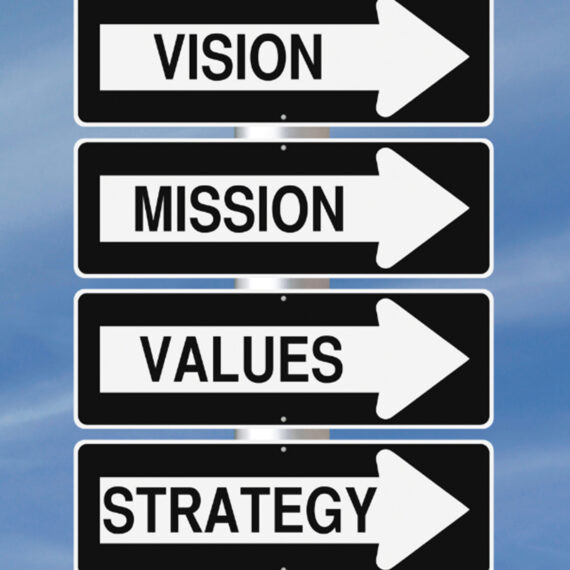Imagine having to map out a family road trip without knowing your destination. Sounds a bit backwards and overwhelming, right?
Too often, barriers of time and resources leave nonprofits of all sizes and at all life-stages operating this way: with no clear destination or a strategy for getting there. Nonprofit leaders may feel like all they can do is to “keep driving.” They provide their services. They steward their donors. They submit their grant reports. They maintain the status quo without ever getting to stop and ask: Where are we trying to go? What do our participants need? What are we trying to solve and how will we know we’re successful?
These questions are natural stepping stones in a strategic planning process — a process nonprofit organizations should undergo every three to five years.
However, for many organizations, a strategic plan can feel like a box to check. When that happens, nonprofit executives may attempt to answer these important strategy questions in a board room on a Saturday lacking external perspectives, buy-in, or consensus.
When checking the box is the end-goal, nonprofits lose sight of the value of good strategy. Good strategy is a product of a thoughtful, flexible process that can’t be tackled in a board room — even with the most diverse and talented board and staff in the world. Good strategy is not a strategic plan. Without a process that is inclusive and destination-driven, a strategic plan is just a bunch of buzzwords that sits in a binder or in a file on a desktop. Indeed, as President Dwight Eisenhower once said: “Plans are useless. Planning is everything.”
So how should organizations approach a strategic planning process that will result in real strategy?
First, there is value in having a conversation with your funders about why a strategic planning process would be game-changing. Funders want to invest their resources in organizations that are guided by good strategy. In fact, many offer capacity building grants or award endowment funding so that organizations can truly invest in a planning process.
However, to ensure a strategic planning process is worth the investment of both your time and resources, there are three important things to keep in mind.
1. A strategic planning process should be inclusive. Incorporating a diverse range of perspectives and experiences is the best way to develop a strategy that is not only realistic, but also exciting for your key supporters and relevant to those you serve.
A strategy-rich planning process starts with setting the perspectives of your participants, volunteers, partners, donors, and other stakeholders as the decision-making foundation. You can do this by facilitating one-on-one interviews, focus groups, surveys, or “town halls” to glean important feedback about what is working well and how your organization might need to shift, adapt, or grow.
At this stage, a third-party facilitator becomes incredibly important, providing the necessary neutrality to collect real information. This individual can be the buffer if a participant needs to share concern about mission-creep or that the model your donors love isn’t working for the clients who actually experience it. As one of our participants put it: “No one wants to tell you your baby is ugly.”
An inclusive strategic planning process not only leaves room for honesty, but also provides a space to build buy-in with your closest allies, partners, and supporters. Asking your stakeholders for their ideas is the quickest way to ensure you have their support when it comes time to implement (and fund) those ideas. Asking your participants for their feedback is the best way to ensure your work is grounded in integrity and purpose.
Take for instance, when the Coalition for Homelessness Intervention and Prevention (CHIP), on behalf of the Indianapolis Continuum of Care, set out to develop the Indianapolis Community Plan to End Homelessness. It engaged 400 community stakeholders — including 170 individuals who were experiencing or had experienced homelessness — in the planning process. By doing so, Indianapolis residents and more than 80 unique agencies were able to make their voices heard and collaborate to create a true community plan.
Key funders, who were included in the planning process, decided to orient their funding priorities around the strategies that were developed. One of their priorities became the commitment to raise and align $4 million toward implementing the strategies identified in the plan. Through careful crafting of the Indianapolis Community Plan to End Homelessness, the Continuum of Care not only set the strategy for addressing one of the most pressing challenges in our city, but unified key perspectives and achieved vital seed funding in the process.
2. A strategic planning process should be oriented toward a clear destination. It should set the results you want to achieve, or the difference you want to make, as the yardstick by which you test all of your decisions.
A good strategic plan should act like a compass — not prescribing every specific turn you must take, but a tool that reminds you what direction you should be going to get to your destination. However, like a compass, a strategic plan is useless unless you know where it is you’re trying to go. Setting a destination is essential for setting strategy.
A strategy-rich planning process doesn’t just ask: “How do we keep going down this path?” Instead, it asks: “What do we want to be different for our community and our participants, and what do we need to change about our approach to make that vision a reality?” One of our clients, for example, answered this question by simply saying: “We have to stop being all things to all people.” This realization articulates what so many nonprofits experience when they lose sight of their true destination — an attempt to do everything “okay” versus one thing extremely well.
When a strategic planning process is destination-driven, it puts your endgame into clear focus and pushes your organization to make decisions based on what gets you closer to your real goal and greater impact.
Keep in mind that your destination:
- should align with your mission;
- should be specific and measurable;
- should elevate the insights of your key stakeholders; and
- should put your participants’ needs front and center.
3. A strategic planning process should be holistic. Setting strategy should include an assessment of what we at Hedges like to call “The Four Pillars of Organizational Health.” In addition to considering the strengths, challenges, and opportunities of your programs and their impact, strong strategic planning takes into consideration plans for strengthening the organization’s leadership and culture, development and financial management, and marketing and communications.
An organization must be able to measure the impact of its programs with the use of strong data, foster leadership and a culture throughout the organization, execute engaging and effective fundraising strategies while maintaining strong financial management, and communicate its impact to key stakeholders and the broader community. Like four legs of a table, these Four Pillars of Organizational Health will provide the strength and balance your organization needs to realize your strategic vision even during times of uncertainty and change.
In a strong strategic planning process, you will take the information you learned from your inclusive research process, align it with your clear direction, and finally set your plan to holistically align with each of these four pillars. This approach allows you to focus on the overall health of your organization in a way that optimizes your resources to create sustainability. While a holistic approach takes more time and resources, the end result builds the capacity of your organization to further expand its impact in the most meaningful way.
As you approach a strategic planning session/process, remember, setting strategy is a process and the process is everything.
Don’t waste your time on a strategic plan that documents the status quo. Especially now, when the philanthropic landscape is changing, unrestricted dollars are elusive, and community needs are becoming increasingly complex, good strategy is more important than ever.
This post was originally published on Charitable Advisors.


